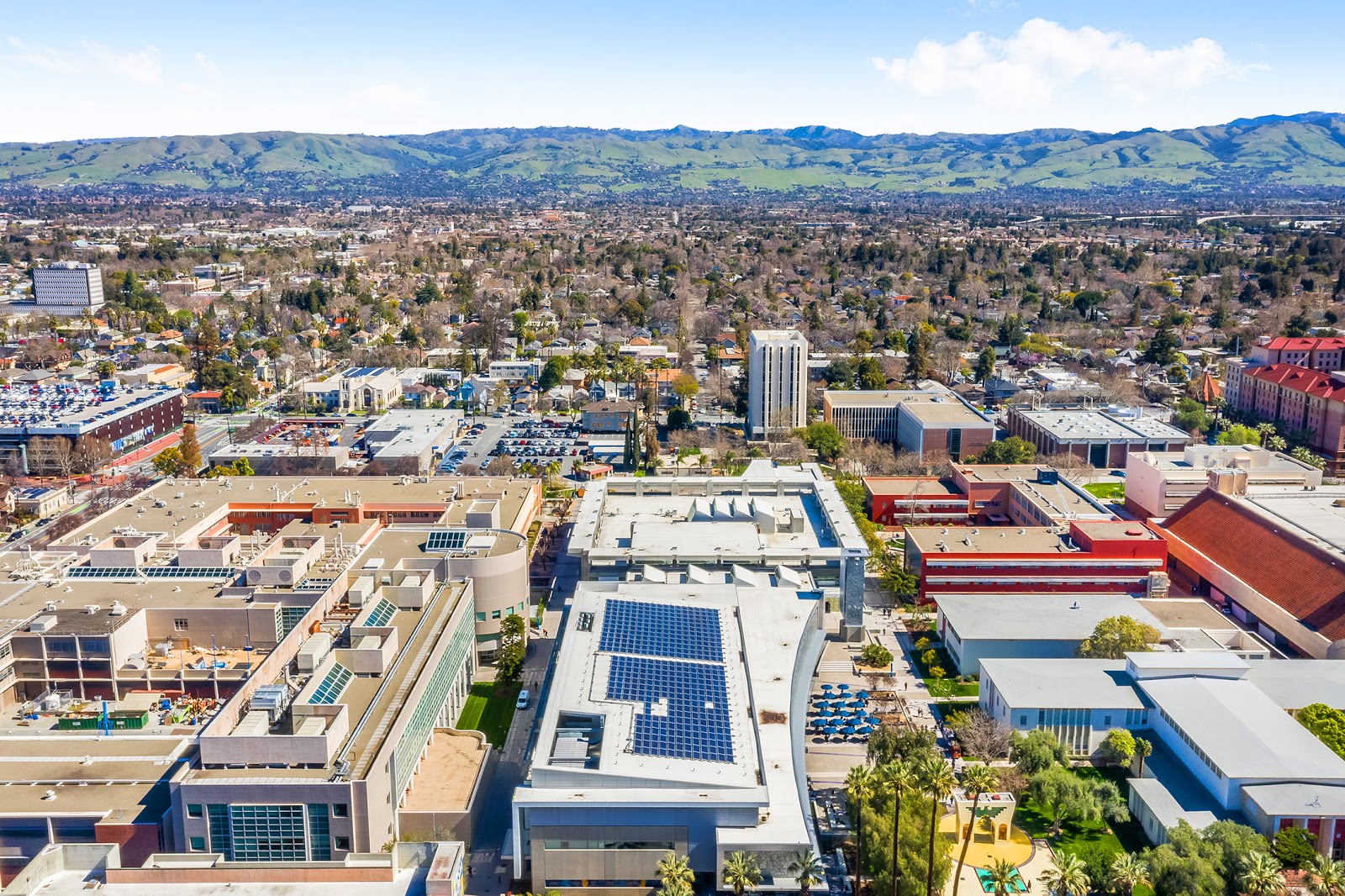Energy and GHG Emissions
California State University (CSU) goals align with the State of California’s AB32 to reduce current greenhouse gas (GHG) emissions to our 1990 levels by 2020. Continuous improvement in energy management has maintained a steady decrease in our energy intensity and GHG emissions. We successfully reduced GHG emissions to our 1990 levels in 2013 and in 2018 we reduced our levels to 12% below our 1990 levels. The campus energy intensity reduced by 20% from Fiscal Years 2009‐2010, meaning despite an increase in campus square footage at the end of Fiscal Year 2017‐2018. We continue to demonstrate our commitment to energy efficiency.
The SJSU Cogeneration Plant installation was completed in December of 1984. The Central Plant includes the Allison 501KH gas turbine, absorption and centrifugal chillers, backup boiler plant with water tube boilers, air emission systems, compressors, generators, water purifiers and other mechanical equipment. The 5.6 MW Cheng Cycle® plant provides steam for heating and cooling for campus buildings. About 80% electricity needed for the campus is provided by the cogeneration system.
The Utility Master Plan for SJSU specifies the approach to continue providing the campus with sustainable and reliable energy. Strategies include considering the conversion of all buildings to 12kV as well as renewable energy sources such as solar panels (PV), fuel cells, and other low/no‐fossil‐fuel technologies. New renewable energy sources are continually being reviewed, and we continue to implement MBCx of campus buildings.
Recent Accomplishments
PV Panels for South Campus and Main Campus Garages
Rooftop solar on 10 main campus roofs, along with covered carport solar systems at south campus will be installed to provide renewable energy to the campus. Savings are estimated at $4.6M through the warranty period of the panels, while lowering our carbon footprint by 511 metric tons CO2-eq. Design will begin in 2019, with installation to occur over the 2019/2020 fiscal year.
Demand Side Management
Demand Side Management has been implemented at the Central Plant since 2003 when the Central Plant installed a thermal energy storage tank that generates ice at night when electrical rates are lower and ambient temperatures cooler. The ice is then used to produce chilled water for pumping into buildings during the day when cooling is needed.
Green Office Certifications
The Green Office Program is a partnership between the Office of Sustainability and
the Environmental Resource Center that offers sustainability education to SJSU’s faculty
and staff. Once a month, University Personnel offers a Green Office Workshop that
gives an
overview of SJSU sustainability initiatives and ways to be sustainable that
are easy to implement, cost effective and positively impact the environment. This
monthly workshop is being developed into a Green Office certification process available
to all campus offices and departments. The certification process had a soft launch
in summer 2019
with the official program launch in the fall.
Objectives for 2030
• The Office of Sustainability will draft a carbon neutrality plan that reflects the
Second Nature Climate Commitment and maps out our greenhouse emission strategy for
the next 25 years.
• Procure more renewable energy.
• Reduce energy usage on campus by retrofitting lighting, controls and implementing
daylight harvesting, which uses daylight and lighting control systems to offset the
amount of electric lighting needed.
• Cut greenhouse gas emissions by 40 percent.
• Carbon neutrality by 2045: Aim for a net zero carbon footprint, meaning that the
campus will achieve net zero carbon dioxide emissions by balancing carbon emissions
with carbon removal.
To get this information in a 2 pager handout, click here [pdf].
